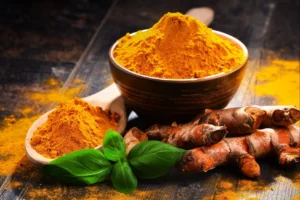
Agnihotra: The Ancient Fire Ritual That Cleanses Your Living Space And You
By Dr. Puja Shah
One of life’s greatest pleasures is that blissful feeling you get after cleaning and decluttering your living space. But when you think of “cleaning and decluttering”, do you visualize the removal of dirt and unwanted objects? Or do you go deeper?
In Ayurveda, cleaning is an energetic affair involving the cleansing of negative charges, emotions, and stagnation. When you walk into a temple, you likely sense a calming and serene energy. Whereas if you walk into an old concentration camp, you may still feel the lingering charges of fear and anger.
Negative energies can feel heavy, sometimes triggering unwanted effects like headaches, and in some cases even full-blown illnesses.
Ayurveda’s answer to this is in the tradition of Vastu (the science of structures), in addition to various sacred Vedic rituals. These generally protect against the evil eye and bring happiness and prosperity to a home or new space.
One such important ritual is the Agnihotra.
What is Agnihotra?
In Vedic times, fire ceremonies were an inseparable part of daily life. Every house had a yagnya kund, a place in which the sacred fires were lit at sunrise and sunset.
The head of the household would light the fire and perform the simple ritual called Agnihotra at dawn and dusk.
Agnihota (Sanskrit for “healing fire”), was called a ‘household friend’. In the ancient Indian scriptures, a kingdom’s massive ritual kept all negativity away and allowed the kingdom to enjoy prosperity and peace.
Agnihotra is the basic HOMA fire ritual, the Sanskrit term given in the ancient Vedic sciences of bioenergy, psychotherapy, medicine, agriculture, biogenetics, climate engineering and interplanetary communication.
The main concept of it lies in the saying, “Heal the atmosphere, and it will heal you.”
How and why does it work?
The healing power behind the science of Agnihotra lies in its process of purifying the atmosphere through a specially prepared fire. It almost creates a “force field” or invisible protective shield.
Dr. Ulrich Berk, the expert scientist in Eastern Europe, who I had the honor of meeting once, had published a report in the Journal for Radiesthesie and stated that after Chernobyl, Agnihotra helped reduce the radiation level.
He states that Agnihotra is said to renew the brain cells, revitalize the skin, and purify the blood. The healing effects of Agnihotra are actually locked in the resultant ash.
Not only does this sacred ceremony influence the physical health of all living things, but also our mental constitution.
The state of the mind is directly dependent on the quantity and quality of the prana available; thus the intensified absorption of prana has a positive effect on the mind, body and spirit.
The Agnihotra recipe
A small fire is made with dried cow-dung cakes, placed in a copper pyramid of fixed size. Copper and gold are the only metals prescribed for the pyramid container used for the Agnihotra fire. It is common knowledge of all ancient traditions that copper and gold have healing properties. Agnihotra is tuned to the biorhythm corresponding to sunrise/sunset.
Once the fire is underway, some grains of rice and ghee (the Ayurvedic clarified unsalted butter) are added in. The ritual is performed exactly at sunrise and sunset to the accompaniment of two simple mantras.
The reason for the cow dung goes back to Ayurveda’s belief in the sattvic qualities of milk and the respect for the cow. Produce like cow’s milk and ghee are sources of Ojas (essences of vitality), which in Ayurveda give our body strength and immunity.
On Indian farms, bulls are used to plough the fields and as a means of transportation of goods. Meanwhile, cow dung is saved and used for fuel, as it is high in methane, and can generate heat and electricity. Many village homes are plastered with a mud/cow dung mixture, which insulates the walls and floors from extreme hot and cold temperatures. Cow dung is also rich in minerals, and makes an excellent fertilizer.
The potency of cow dung and ghee
Scientific research has found that the ritual of burning cow dung and ghee as fuel for these sacred fires, actually purifies the air, and distributes anti-pollutant and anti-radiation qualities into the environment.
Ghee also has properties of detoxification. During combustion, nutrients for plants are released in both fine and coarse forms. Ghee undergoes many chemical combinations and dissolves toxic compounds. Interestingly enough, It is the only substance known to modern science, which defies certain laws of chemistry: so when ghee is burned under ideal conditions its weight does not alter.
Agnihotra step-by-step
1
Place a flat piece of dried cow dung at the bottom of the copper pyramid.
2
Arrange pieces of dried cow dung, which have been coated with ghee in the pyramid so that air can still pass.
3
Apply a little ghee on the small piece of cow dung and light it. Insert this lighted piece of cow dung in the pyramid so all the dung in the pyramid will catch fire.
4
You may use a hand fan to help the flame. However, do not blow through the mouth.
5
Do not use any mineral oil or similar material to start the fire.
6
At the exact time of sunrise and sunset for that day or evening, when the offerings are made, the fire should be fully ablaze in the pyramid.
7
Take a few grains of rice in a dish or your left palm and apply a few drops of ghee.
8
Take a moment to understand the associated Mantras and how to perform them:
Sunrise Mantra : Suryaya Swaha, Suryaya Idan Na mama, Prajapataye Swaha, Prajapataye Idan Na mama (Unto the fire I am offering all. This offering is not mine, it is Thine.)
Sunset: Agnaya Swaha, Agnaya Idam Na mama, Prajapataye Swaha, Prajapataye Idan Na mama (Unto the sun I am offering this. This is not mine, this is Thine.)
Exactly at sunrise utter the first Mantra and after the word SWAHA add a few grains of rice from your right hand (as little as you can hold in the pinch of your fingers will be sufficient) in the fire.
Utter the second Mantra and after the word SWAHA add a few grains of rice from the right hand in the fire. Rice has a balancing yin and yang effect. Many ethereal oils are released during the process of combustion and chemical reactions are set off.
At sunset do the same by using the evening Mantras.
Agnihotra Mantras are to be recited only once, with only two offerings given at each Agnihotra performance. The Mantra sung at sunrise and sunset stands, as mentioned, in resonance with the biorhythm. The notes, which are chanted, activate special vibrations, which create a specific atmosphere aimed at achieving the desired results.
Such vibrations exist for everything, and everything can be activated, controlled and transformed by Mantras. The atoms structure themselves anew. When mantras are chanted during HOMA, the vibrations of the Mantras are enclosed in the ash itself, and the ash as the medium for these vibrations is even more effective.
9
Timing is crucial, so if you miss the right time, the healing effects of the ash are not full of the same power.
10
After each Agnihotra, try to spare as many minutes as you can for meditation. You can sit quietly until the fire extinguishes itself. Agnihotra creates a medicinal and healing atmosphere, so absorb and just feel it.
11
If possible, the Agnihotra pyramid and the energy resulting from the Agnihotra process is best left undisturbed until the next Agnihotra time.
12
Just before the next Agnihotra, you can empty the ash using your right hand and store it in a bag, box, glass jar or clay pot. The ash from the Agnihotra fire is extremely medicinal, as we will discuss below.
How Agnihotra affects its natural surroundings
Post Agnihotra, it’s said that the ghee is thrust into the atmosphere and actually attaches itself to the molecular structure of the soil, allowing the soil to retain more moisture.
Plants grown in an atmosphere of Agnihotra are more able to withstand droughts. Agnihotra causes a change in the cellular structure of the plant, which sends more nutrients to the fruit of the plant and less to the leaves, stem and roots.
Plants in the HOMA atmosphere develop cylindrical veins (vascular tissue or bundles) with an above average diameter. Through these optimized “pipes”, water and nutrients can reach all parts of the plant more easily, which supports their growth and reproduction.
The HOMA atmosphere also fosters both the photosynthesis in the leaves and the respiration of the plant, thereby fostering the entire oxygen cycle. The Agnihotra smoke works as a catalyst for the production of chlorophyll. The roots of the plants remain small due to their optimal absorbency and the excellent nutrients in the ground.
As a result, the vegetables and fruits grown in a HOMA atmosphere are of an outstanding quality, with some remarking that the size, taste, texture and yield of fruits and vegetables grown in Agnihotra atmospheres were different and felt more superior.
It’s also said to reduce pests in gardening. If harmful insects do persist in the garden or the fields, a mixture of Agnihotra ash, dry cow dung, and water sprayed on both the ground and the plants helps.
This brings up the point of introducing HOMA ash into the ground. This enriches the ground with immense vibrations and actually stabilizes the amount of potassium, nitrogen and trace elements in the ground. Earthworms also multiply faster due to the change of the soil content, which then guarantees more humidity for richer soil.
Finally, bees are also attracted to the HOMA energy, with more pollination of the plants. Bees produce a particular element in the HOMA atmosphere, which, if consumed in honey, strengthens the human immune system.
The remarkable medicinal properties of Agnihotra
As well as enriching the surroundings of the Agnihotra pyramid with nutrients, the fire technique induces a powerful energy field, which neutralizes negative energy types and strengthens positive ones. The Agnihotra smoke binds detrimental bits of radiation in the atmosphere and neutralizes their radioactive effect.
In Agnihotra nothing is destroyed, only transformed.
In a polluted environment, the elements of the earth begin to change: the structure of the chemical elements and their connection to molecules are restructured. These fine material changes during Agnihotra can be seen with the help of Kirlian photography.
Agnihotra is said to renew the brain cells, revitalize the skin, and purify the blood. As stated earlier, the healing effects of Agnihotra are locked in the resultant ash. People around the world have claimed to experience healing of all types of ailments by using Agnihotra ash.
Monica Koch, a pharmacist and long time Agnihotra teacher who wrote “Homa Therapy: The Ancient Science of Healing,” says that humans can ingest the ash to heal by adding it to bathwater and bathing in it, to ointments for wounds, to drinking water, to chest compresses and even eye drops.
In the article “Agnihotra, the Solution for Radioactivity,” Koch writes, “it is very helpful to use plenty of green tea and miso together with the Agnihotra ashes.” She also says you can spray your plants with it.
The purification of the atmosphere through HOMA leads to an intensification of the life energy, or in Vedic terms, the prana. Not only does it influence the physical health of all living things, but also the human mental constitution.
The state of the mind is directly dependent on the quantity and quality of the prana available; thus the intensified absorption of prana has a positive effect on the mind and spirit.
Those who regularly practice Agnihotra soon experience a decrease in anger and greed; mood changes are less vehement and one feels calmer altogether.
It’s important to note however, as stated by the Spiritual Science Research Foundation, that the person who is performing the Agnihotra, must be of “spiritual” nature to reap the full benefits. In other terms, one should perform it with pure intention and openness.
Are you ready to clear your space?

About Dr. Puja Shah, Editor-in-Chief of The Natural Law
Dr. Puja Shah is an award-winning author whose 93 year old grandmother swore by Ayurvedic remedies and practiced yoga into her last days. And so while her education includes 9 years of medical training as a dentist, 3 teaching qualifications in yoga, and dozens of courses in meditation, it’s no wonder that she always goes back to Ayurveda. Puja harnesses Ayurveda regularly with her children and husband Amish Shah, Founder of The Natural Law.
Shop Cleansing Curations In Our Marketplace
Currently available to US Customers only
Recent Blog Post

© 2023 The Natural Law | Privacy Policy | Terms of Use











